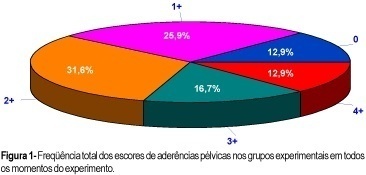You searched for:"Andréa da Rocha Tristão"
We found (2) results for your search.-
Febrasgo Position Statement
Vulvovaginitis in pregnant women
Rev Bras Ginecol Obstet. 2024;46:e-FPS03
Summary
Febrasgo Position StatementVulvovaginitis in pregnant women
Rev Bras Ginecol Obstet. 2024;46:e-FPS03
Views227See moreKey points
• The balanced vaginal microbiome is the main factor defending the vaginal environment against infections. Lactobacilli play a key role in this regard, maintaining the vaginal pH within the normal range (3.8 to 4.5).
•Hormonal and immune adaptations resulting from pregnancy influence changes in the vaginal microbiome during pregnancy.
•An altered vaginal microbiome predisposes to human immunodeficiency virus (HIV) infection.
•Bacterial vaginosis is the main clinical expression of an imbalanced vaginal microbiome.
•Vulvovaginal candidiasis depends more on the host’s conditions than on the etiological agent.
•Trichomonas vaginalis is a protozoan transmitted during sexual intercourse.
•The use of probiotics is not approved for use in pregnant women.
-
Original Article
Pelvic adhesion prevention: experimental study on rats with different therapeutic agents
Rev Bras Ginecol Obstet. 2003;25(5):359-364
Summary
Original ArticlePelvic adhesion prevention: experimental study on rats with different therapeutic agents
Rev Bras Ginecol Obstet. 2003;25(5):359-364
DOI 10.1590/S0100-72032003000500009
Views1See morePURPOSE: to evaluate the degree of pelvic adhesions in function of time and the different substances used in its prophylaxis. MATERIAL AND METHODS: prospective study with 120 female, albino, virgin Wistar rats, 3 to 4 months of age, weighing approximately 250 g, randomly divided into 10 groups of 12 animals each: control, without lesion; lesions and without treatment; lesions + 0.9% physiologic saline, lesions + Ringer lactate; lesions + 32% dextran 70; lesions + Ringer lactate/heparin; lesions + Ringer lactate/dexamethasone; lesions + Ringer lactate/hydrocortisone/dexamethasone/ampicillin; lesions + Ringer lactate/albumin, and lesions + 1% carboxymethylcellulose. The animals were anesthetized and two types of lesions (scarification and electrocauterization) were performed in the uterine horns, followed by treatment with the solutions, intraperitoneally, to prevent pelvic adhesions. On the 7th, 14th and 28th postoperative days, moments M1, M2 and M3, respectively, the presence of adhesions was evaluated in 4 rats of each group. The methods applied to the quantification of the adhesions were based on Cohen’s classification, with scores varying from 0 to 4+ according to the amount, characteristics and location of the adhesions. Statistical analysis was performed by parametric tests for analysis of variance and the Kruskal-Wallis test. RESULTS: the best treatments for prevention of pelvic adhesions in female rats were Ringer lactate/dexamethasone (score 1+ prevalence), 32% dextran 70 to (score 2+ prevalence) and Ringer lactate/hydrocortisone/dexamethasone/ampicillin (score 2+ prevalence). The postoperative period, represented by moment M3, and the surgical technique, predominantly with score 0, influenced adhesiolysis and maintenance of pelvic adhesions in female rats. CONCLUSIONS: the prevention of pelvic adhesions in female rats begins with the surgical process at a smaller extent of tissue damage. The use of prophylactic substances (solutions) had a varied effectiveness, since some were more efficient than others.

Search
Search in:
Tag Cloud
breast (42) breast cancer (42) breast neoplasms (95) Cesarean section (72) endometriosis (66) infertility (56) Maternal mortality (43) menopause (82) obesity (58) postpartum period (40) pregnancy (225) Pregnancy complications (99) Prenatal care (68) prenatal diagnosis (50) Prevalence (41) Quality of life (51) risk factors (94) ultrasonography (79) urinary incontinence (40) women's health (48)


